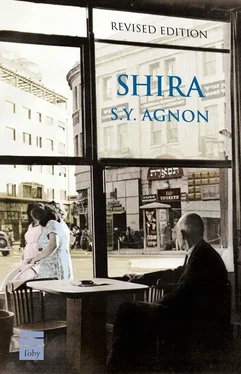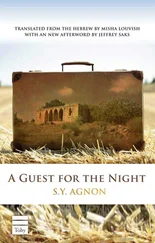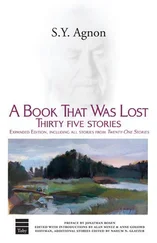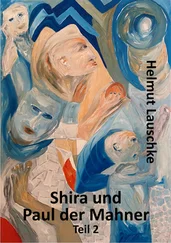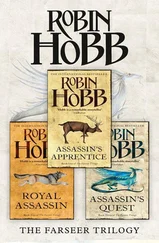Herbst takes due notice of the Böcklin painting in Shira’s apartment, and he is several times bothered by an oddly literal question about it: “Did Böcklin paint from a model or from his imagination? Why do I ask? Herbst wondered about himself (I:29). Why, indeed, should so sophisticated an intellectual trouble himself about whether the painter used a model or not? The question, it should be observed, makes somewhat better sense if one keeps in mind not just the skull but both figures in Self-Portrait with Death as Fiddler , for then, since Böcklin demonstrably used himself as the model for the painter, one might begin to speculate about the “source” for the macabre fiddler standing behind the painter, the very hybrid nature of the composition putting to the test any simple mimetic conception of art. A couple of paragraphs later in the same chapter, a clue, or at least a dangling possibility of connection, is provided for Herbst’s question. Again he asks himself whether Böcklin worked from a model or from his imagination, but this time he decides firmly on the latter alternative when he recalls that Böcklin “complained that he never had the chance to draw a woman from life because his wife, who was Italian, was jealous and wouldn’t allow him to have a model in his studio.” There is an instructive overlap, then, between painting eros and painting thanatos from the imagination rather than from a model. The particular link is important enough for Herbst to pick it up again explicitly in a dream somewhat later in the novel (ii:7). In the dream he accompanies his daughter Tamara to Greece, where she means to undertake a study of verse meters (the word shira is used here for poetry). The father is glad to have gone with his daughter on the trip for “otherwise she would have seen him walking with Shira, which was not advisable, because Henrietta was in collusion with the wife of a teacher from Beit Hakerem. They agreed to prohibit their husbands from bringing other women to their studios, declaring, ‘If they want to draw — let them draw skulls.’“ One notes that Böcklin’s allegorical pair, Dichtung und Malerei , Poetry and Painting, follow in quick sequence in the dream.
Agnon gives one further twist to the Böcklin painting by turning it at one point into a kind of reversed portrait of Dorian Gray: as Shira visibly deteriorates, the painting deteriorates with her and so its artificial deathliness becomes progressively more lifelike: “The picture became so darkened that it would frighten you, as though a real skull were staring at you” (ii:2). Agnon never entirely renounced the macabre interests of his early neo-Gothicism, and though here the ghastly correspondence between painter and owner is given a perfectly plausible explanation — as Shira neglects herself, she neglects her possessions and no longer bothers to dust the painting — troubling thoughts are stirred about the status in reality of the artwork. Its origins, or at least the origins of the part of the Böcklin painting mentioned in the novel, are not in the representation of a model but in the artist’s imagination, and yet the unforeseen intercourse between painting and experience produces a spectral affinity between the two, imbuing the artwork with an air of reality the artist himself had not given it.
Let us try to pull these strands together and consider the kind of conclusion to which Agnon wanted them to lead. Shira, hardbitten, mannish, unseductive, coldly imperious, neither young nor pretty, seems an unlikely candidate either for the focus of an erotic obsession or for the symbolic representation of Poetry. It seems to me, however, that all these unappetizing traits are precisely what makes her the perfect conduit to carry Herbst from the realm of scholarship to the realm of poetry. Agnon’s figure for Poetry is no classical maiden in decorous déshabillé . Art as he conceives it is a violation of all the conventional expectations of bourgeois rationality. In Freudian terms, the roots of art are in the pre-moral realm of polymorphous perversity. It is hard to reconcile anything in the character of Shira with ordinary notions of the good and the beautiful, and once Herbst has learned something about her bizarre sexual history, the initial ambiguity of identity between female and male that he perceives in her is compounded by others in his fantasies: Shira is both the rapist and the raped, the wielder of terrible weapons and the dismembered female victim, the nurturer of mothers and infants and the asocial disrupter of families, nurse and source of contagion. Sexually, she clearly appeals to Herbst because she is everything that his fadedblonde, maternal, sweetly solicitous wife is not, and in the thematic logic of the novel, it is necessary that he be detached from the complacencies of the haven of domesticity in order to be inducted into the soul-trying realm of poetry. The novel stresses the indissoluble bond between poetry and eros, because in Agnon’s view what art does is give the revelatory coherence of form to erotic energies (the affinity with both Nietzsche and Freud is not accidental), and, conversely, the many-faced spirit of eros, both god and monster, is the very motorforce of art. It is instructive that Agnon’s major fiction before Shira repeatedly focuses on some form of gravely impaired male sexuality (A Simple Story, Only Yesterday , novellas like The Hill of Sand and Betrothed) ; only in this novel is there emotionally affecting consummation — “Flesh such as yours will not soon be forgotten” — however elusive the object of desire subsequently proves to be.
But the most crucial crossing of opposites associated with Shira is the wedding of health and sickness, love and death. At the beginning, the freckle-like protuberances on Shira’s cheeks seem to be merely a token of her mannish unattractiveness; eventually, we realize that they were an early sign of her leprosy, and so the death’s head on her wall becomes an emblem of the fate to which she is consigned, in which Herbst will finally join her. It is reasonable to assume that Agnon, who made a careful study of Freud in the 1930s and probably read him episodically earlier during his sojourn in Germany, followed Freud in positing eros and thanatos as the two universal driving forces of the psyche. A couple of the passages we have glanced at establish an eerie equivalence between the two. If Böcklin, Herbst reasons, was obliged to use only the power of his imagination for the female figures he painted, the same must be true for his painting of the skull. And if Herbst in his dream, constrained like Böcklin by his wife’s jealousy, is denied access to female models, he is invited to substitute bony death for woman’s flesh as the subject of his art. In the end, no model is required for either, because love and death are so deeply seated in every one of us, constituting the matrix of all our human imaginings.
A small point in Agnon’s Hebrew makes the force of his ramified use of painting particularly clear. The standard Hebrew verb “to paint,” tzayer , is also the verb Agnon uses for “to imagine.” A chief reason for Herbst’s failure to write his tragedy is that he is too fastidious to imagine, or literally “paint to himself,” the concrete suffering of the leper who figures centrally in its plot. “Herbst was afraid to immerse himself in that sickness and explore it, to picture various aspects of leprosy, such as how lepers relate to each other or how they function in conjugal terms” (ii:17). The true artist is the person, like Rembrandt of The Anatomy Lesson , like the anonymous painter of the school of Bruegel, and like Böcklin, who looks on death and disease clear-eyed and unflinching, just as we see the face of Böcklin in his self-portrait serenely scrutinizing his canvas.
Читать дальше
